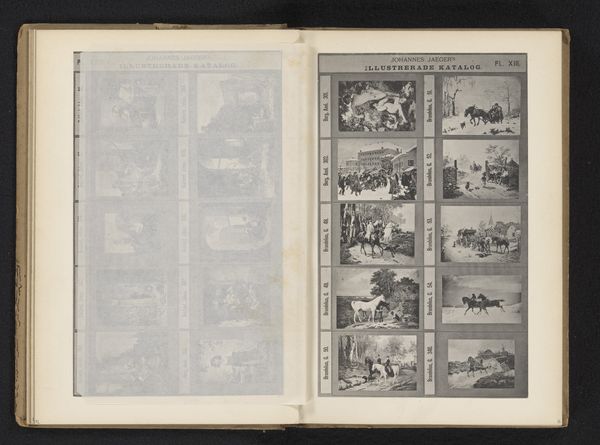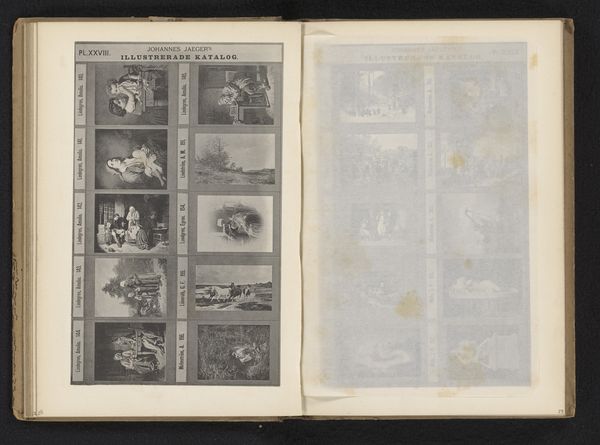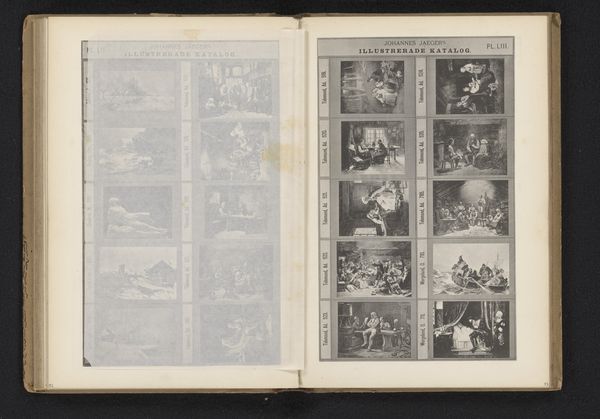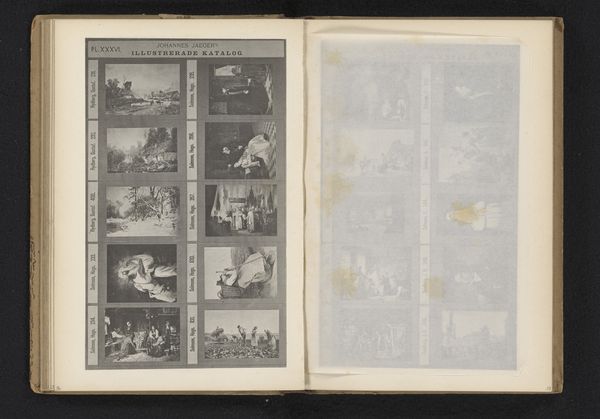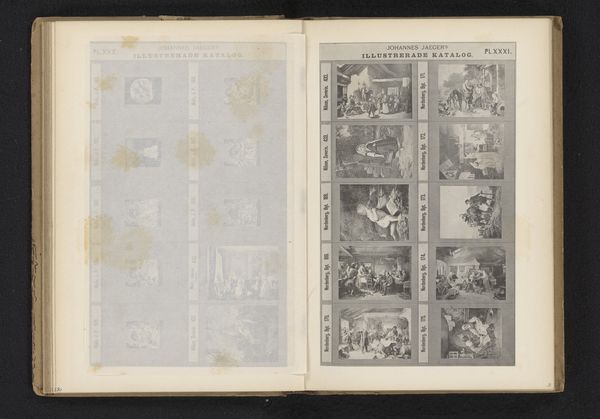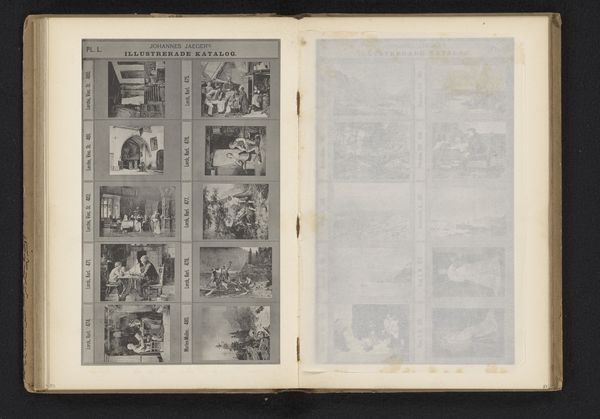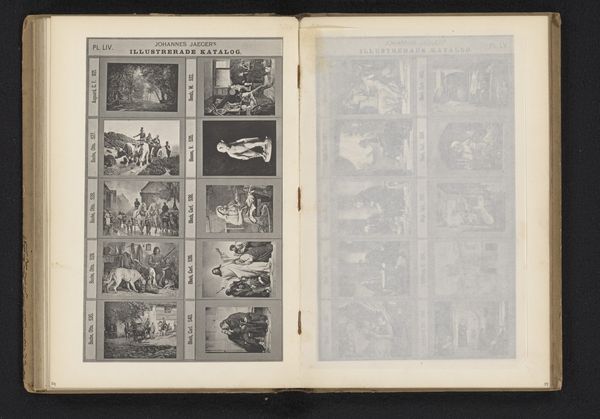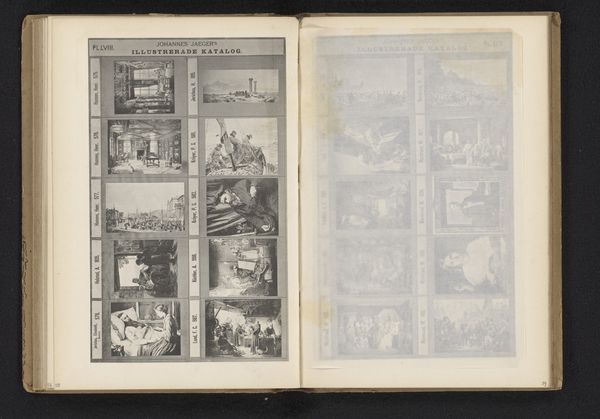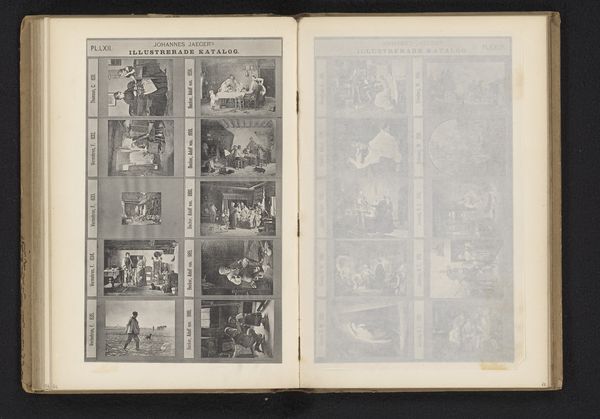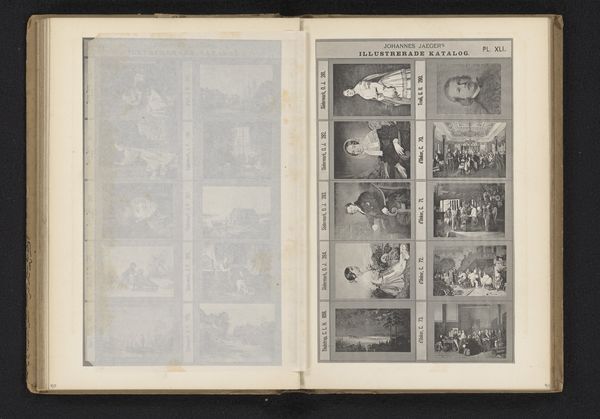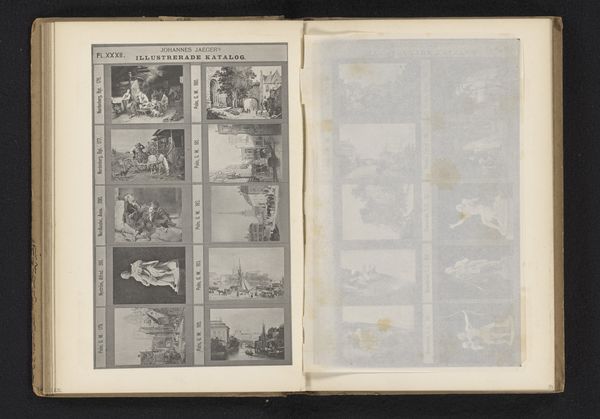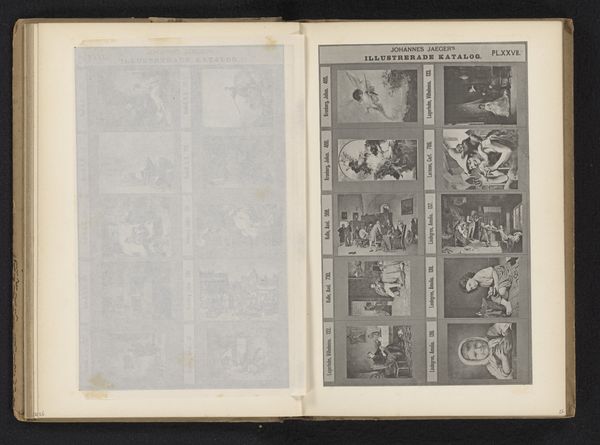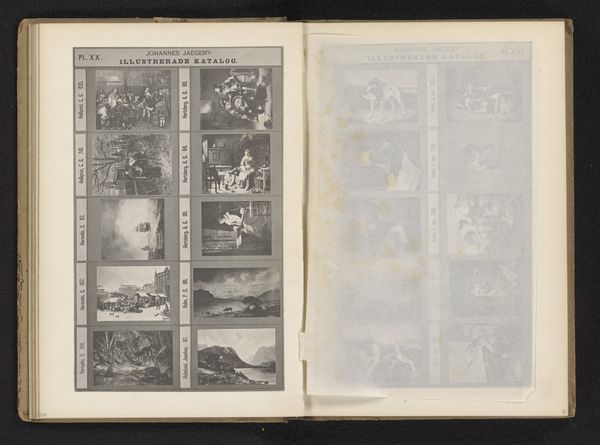
drawing, print, photography
#
drawing
# print
#
landscape
#
photography
Dimensions: height 182 mm, width 109 mm
Copyright: Rijks Museum: Open Domain
Curator: Here we have "Fotoreproductie van tien schilderijen," or "Photoreproduction of Ten Paintings," made around 1872-1882 by Johannes Jaeger. It combines drawing, photography and print media. What strikes you first? Editor: The sheer presentation of it – the seriality. It’s not just the art but the catalog form itself. Mass reproduction. What did it mean to assemble and circulate art in this way at the time? Curator: That catalog format hints at a wider project to capture, categorize and make art accessible through mechanical means. Look at the diversity represented in these small pictures; it points toward the artistic canon, even national identity. It’s more than simple utility; this assemblage constructs a specific image-based heritage. Editor: It begs the question: for whom? Who consumes this “illustrated catalog?” It looks almost like a product— are these miniature landscapes samples in a portfolio, or historical documents for an emerging merchant class? Curator: Interesting thought. Perhaps the mass-produced book brought cultural symbols to a wider middle-class audience eager to cultivate their taste and status. I wonder about the symbolism behind these selected works, are we seeing moral allegories embedded in landscape, and portraiture? Editor: Exactly! And it reveals what "good taste" and high culture means from a period's standpoint. And think about Jaeger as a facilitator, almost like an early influencer shaping tastes in the art market through reproductions, distribution, a distinctly nineteenth-century economy of images. Curator: We get a peek behind the curtain, or inside the artist’s studio, it lets us engage directly with a critical shift in artistic distribution. Editor: It challenges us to look beyond the aesthetic surface. To consider how meaning shifts in relationship to labor, materials, markets and circulation. Thank you, Jaeger, for the peak at artistic commodification. Curator: Ultimately, we can appreciate how these reproductions reflect not just individual masterpieces, but how value and cultural narratives are transmitted, even transformed, when captured in print.
Comments
No comments
Be the first to comment and join the conversation on the ultimate creative platform.
